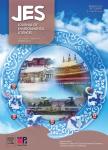Short-term inhalation exposure evaluations of airborne antibiotic resistance genes in environments
作者机构:Institute of Environmental TechnologyCollege of Environmental and Resource SciencesZhejiang UniversityHangzhou 310058China Department of Veterinary MedicineUniversity of CambridgeCambridge CB39DAUK
出 版 物:《Journal of Environmental Sciences》 (环境科学学报(英文版))
年 卷 期:2022年第34卷第12期
页 面:62-71页
核心收录:
学科分类:083002[工学-环境工程] 0830[工学-环境科学与工程(可授工学、理学、农学学位)] 07[理学] 08[工学] 070602[理学-大气物理学与大气环境] 0706[理学-大气科学] 0713[理学-生态学]
基 金:supported by the Natural Science Foundation of China(No.21876147) the Fundamental Research Funds for the Central Universities the Zhejiang University Global Partnership Fund the China Scholarship Council and the Zhejiang University Academic Award for Outstanding Doctoral Candidates
主 题:Airborne Antibiotic resistance genes(ARGs) Short-term inhalation Risk assessment
摘 要:Antibiotic resistance is a sword of Damocles that hangs over *** regards to airborne antibiotic resistance genes(AARGs),critical knowledge gaps still exist in the identification of hotspots and quantification of exposure levels in different ***,we have studied the profiles of AARGs,mobile genetic elements(MGEs)and bacterial communities in various atmospheric environments by high throughput q PCR and 16S r RNA gene *** propose a new AARGs exposure dose calculation that uses short-term inhalation(STI).Swine farms and hospitals were high-risk areas where AARGs standardised abundance was more abundant than suburbs and urban ***,resistance gene abundance in swine farm worker sputum was higher than that in healthy individuals in other *** correlation between AARGs with MGEs and bacteria was strong in suburbs but weak in livestock farms and *** exposure analysis revealed that occupational intake of AARGs(via PM10)in swine farms and hospitals were 110 and 29 times higher than in suburbs,were 1.5×10^(4),5.6×10^(4)and 5.1×10^(2)copies,i.e.,61.9%,75.1%and 10.7%of the overall daily inhalation intake,*** study comprehensively compares environmental differences in AARGs to identify high-risk areas,and forwardly proposes the STI exposure dose of AARGs to guide risk assessment.



